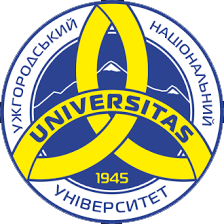MODELS OF PERSONALITY BURNOUT
DOI:
https://doi.org/10.32782/psy-visnyk/2025.1.16Keywords:
emotional burnout, military personnel, professional stress, psycho-emotional state, prevention, resilience, burnout modelsAbstract
The article explores the syndrome of emotional burnout as a multidimensional psycho-emotional state that arises under prolonged stress in professional activities. The author focuses on the specific challenges faced by military personnel, highlighting factors contributing to emotional exhaustion. Key burnout models are examined, including the one-factor model (A. Pines, E. Aronson), two-factor model (D. Dierendonck, W. Schaufeli), three-factor model (C. Maslach, S. Jackson), and dynamic model (J. Greenberg), which provide insights into different aspects of the syndrome. Special attention is given to analyzing the factors contributing to the development of burnout syndrome among military personnel, including professional instability, constant intrapersonal conflict, high communicative demands, and adaptation to new service conditions. The main symptoms of emotional burnout are analyzed, encompassing psychophysiological (chronic fatigue, insomnia, physical exhaustion), socio-psychological (emotional indifference, irritability, isolation), and behavioral manifestations (reduced work efficiency, avoidance of responsibilities). The author emphasizes the distinction between burnout and other psycho-emotional disorders, such as secondary traumatic stress. Burnout is described as a dynamic process that can progress through several stages, from initial enthusiasm to severe physical and psychological consequences. The article highlights the universal nature of burnout, which is not limited to “human-human” professions but is relevant to a wide range of fields. The article offers recommendations for implementing adaptive preventive strategies to strengthen the psycho-emotional resilience of military personnel. These strategies include fostering emotional awareness, developing effective communication skills, and creating a supportive work environment. The conclusion emphasizes the necessity of a comprehensive approach to preventing and addressing emotional burnout, considering socio-psychological and professional factors.
References
Емоційне вигорання /упоряд. В. Дудяк. К. : Главник, 2007. 128 с.
Кириленко О. А. Психологічні детермінанти професійного стресу у представників професії типу «людина-людина»: дис. к.психол.н. К., 2006. (Київський національний університет ім. Т.Г. Шевченка)
Колтунович T. Психологічні умови корекції професійного вигорання у вихователів дитячих навчальних закладів : дис. … к.психол.н., Івано-Франківськ, 2016. 352 с.
Куфрієвський А.С. Соціально-психологічні детермінанти розвитку синдрому «вигорання» серед працівників пожежно-рятувальних підрозділів МНС України : автореферат дис. к.психол.н. Харків, 2006. 22 с.
Маркова А. Феномен психологічного стресу у працівників медичної сфери : магістерська робота. Ізмаїл, 2024. 80 с.
Наґоскі Е., Наґоскі А. Вигоряння. Стратегія боротьби з виснаженням удома та на роботі : підручник / пер. з англ. С. Новікова. Харків : Книжк. клуб «Клуб Сімейн. Дозвілля», 2023. 320 с.
Орлянська Н. Психологічні чинники емоційного вигорання військовослужбовців інженерних військ збройних сил україни : дис. д-ра філософії в галузі психології : 053. Київ, 2024. 217 с.
Прикладна психологія військової діяльності: підручник. Київ : НУОУ, 2022, 292 с.
Пʼянківська Л. В. Психологічна профілактика синдрому "емоційного вигорання" у курсантів вищих навчальних закладів МВС України : дис. … канд. психол. наук : Київ, 2019. 282 с.
Синдром «професійного вигорання» та професійна кар’єра освітніх організацій: гендерні аспекти: навч. посіб. /за наук. ред. С.Д. Максименка, Л.М. Карамушки, Т.В. Зайчикової. 2-е вид., перероб. та допов. К. : Міленіум, 2006. 368 с.
Халанський В. Запал без вигоряння. Як завершити цикл стресу, працювати до вподоби і жити щасливо. Харків : Віват, 2023. 496 с.
Ходаківська О. М. Професійний стрес як чинник «вигорання» фахівців у системі «людина – людина» : навч. посіб. Хмельницький : ХІСТ Ун-ту «Україна», 2010. 339 с.
Caroll J. F.X, White W. L. Job stress and burnout: Research, theory and intervention perspectives; ed. by W.S.Pain. Theory building: Integrating individual and environmental factors within an ecological framework. Beverly Hills; London; New Delhi. 1982. P. 41–60.
Cherniss C. Professional burnout in human service organizations. New York : Praeger, 1980. 233 p.
Garden A.-M. Depersonalization: a valid dimention of burnout?. Human relations. 1987. No. 40 (9). P. 545–560.
Green D.E, Walkey F.H, Taylor A.J. The three-factor structure of the Maslach Burnout Inventory: A multicultural, multinational confirmatory study. Journal of Social Behavior and Personality. 1991. No. 6 (3). P. 453–472.
Hans Selye. Stress without distress: book. Signet, 2022. 208 p.
Jones J.W. Preliminary manual: The staff burnout scale for heath professional. Park Ridge, IL: London House. 2008. P. 36.
Maher E.L. Burnout and commitment: A theoretical alternative. Personnel and Guidance Journal. 1983. No. 61. P. 390–393.
Maslach С., Jackson S., Leiter M. Maslach Burnout Inventory Manual. Palo Alto, California: Consulting Psychological Press Inc. 1996. P. 52.
Maslach C. Burnout. The cost of caring. NY : Prentice-Hall, 1982. 192 p.
Maslach C., Jaskson S. E. Burnout in organizational settings. Sage. Beverly Hills, CA, 1984. P. 133–154.
Maslach C., Leiter M. P. The truth about burnout: How organization cause personal stress and what to do about it : book.
SF, CA: Jossey-Bass, 1997. 186 p.
Morrow L. The burnout of almost everyone. Time Magazine. 1981. No. 60 [21 September]. P. 84–96.
Pines A.M, Aronson E. Career burnout: Causes and cures. New York : Free Press, 1988. 257 p.
Pines A.M, Aronson E. Career burnout: Causes and cures. New York : Free Press, 1988. 257 p.
Schaufeli W. Past performance and future persperctives of burnout research. Washington DC : Journal of Industrial Psychology, 2003.
Schaufeli W., Maslach C., Marek T. Professional burnout : recent developments in theory and research. Washington DC : Taylor & Franci, 1993. 292 p.
Schwab R.L, Iwanicki E. F. Perceived role conflict, role ambiguity, and teacher burnout. Educational Administration Quarterly. 1982. No. 18 (1). P. 60–64.
Van Dierendonck D., B. Schaufeli W., J. Sixma H. Burnout among general practitioners: a perspective from equity theory. Journal of Social and Clinical Psychology. 1994. No. 13. P. 86–100.
Красницька О. Профілактика соціальної депривації особистості. Ввічливість. Humanitas. 2021. № 3. С. 52–59. https://doi.org/10.32782/humanitas/2021.3.8.
Красницька Ольга. Педагогічна майстерність викладача вищої військової школи : підручник. Київ : вид. дім «Кондор», 2020. 528 с.
Красницька О. В. Депривація військовослужбовців, які виконують завдання у відриві від основних сил, та в умовах полону. Вісник Національного університету оборони України. 2022. № 2 (66). С. 50–63. https://doi. org/10.33099/2617-6858-2022-66-2-50-63.






